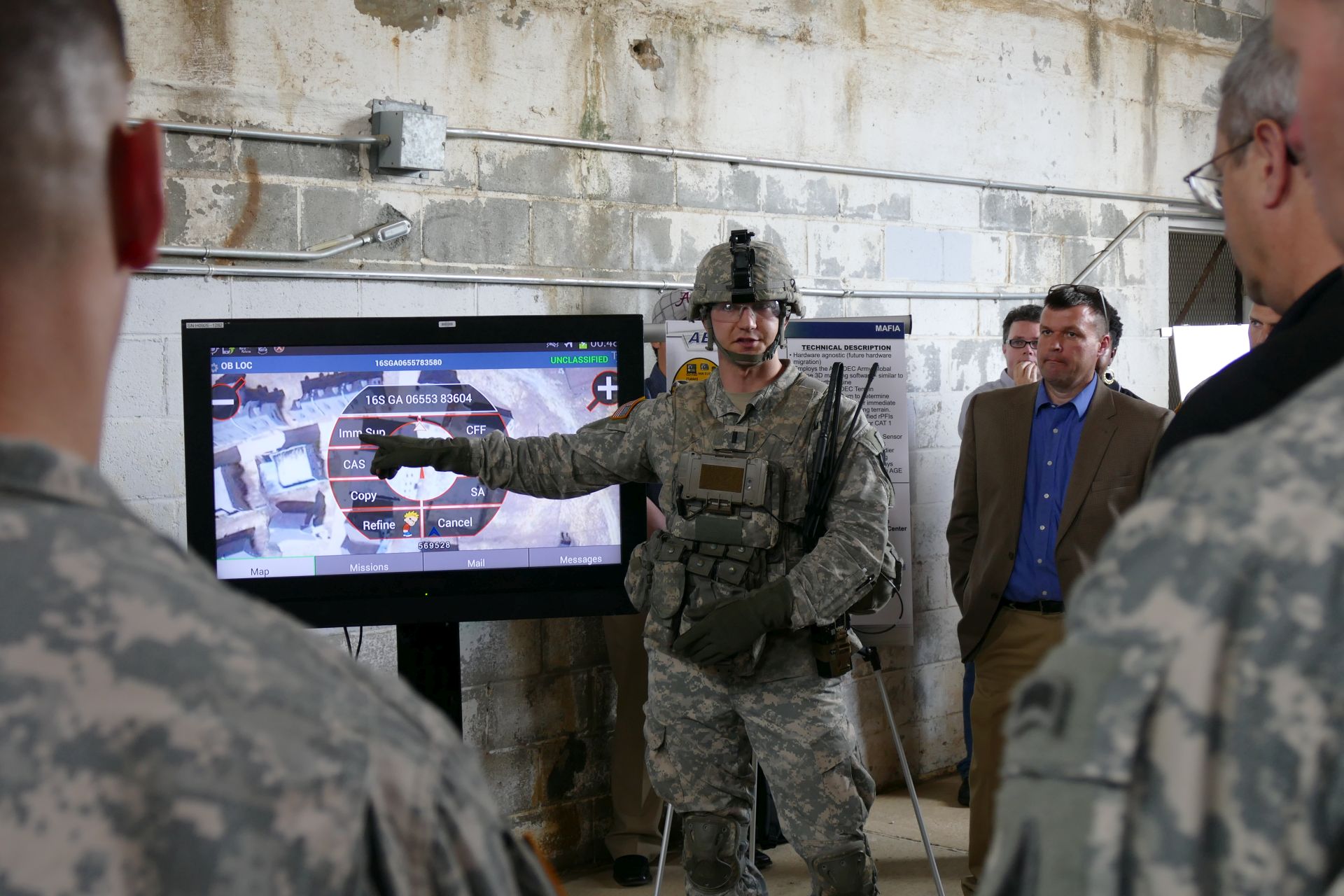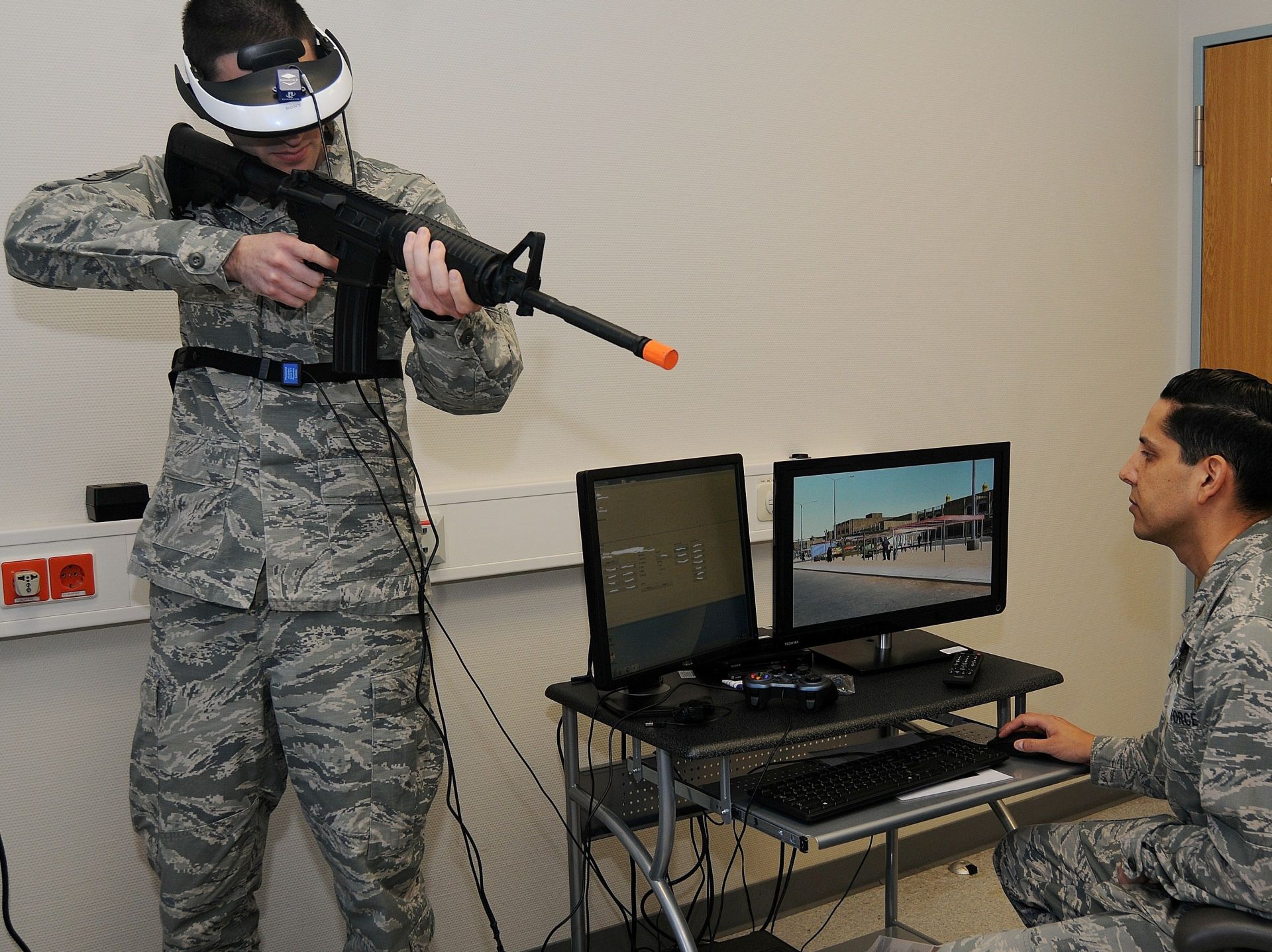Three Army technologies were in play at the recently conducted Army Expeditionary Warfighter Experiment, or AEWE, on Fort Benning, Georgia.
“AEWE is [Training and Doctrine Command, or TRADOC] live, prototype experimentation campaign,” said Harry J. Lubin, chief of the experimentation branch, Maneuver Center of Excellence. This year, 66 industry and military technologies participated in AEWE.
U.S. Army Aviation and Missile Research, Development and Engineering Center, also known as AMRDEC, technologies participating in spiral “J” included the TowerHawk weapons system, Containerized Weapons System, and the Maneuver Aviation Fires Integrated Application, also known as MAFIA.
TowerHawk is a transportable, modular remote weapon system. Soldiers can employ it as an integrated capability of the Combat Outpost’s Force Protection network or as a stand-alone capability, said Stephen W. Stillwell, Jr. project engineer, Engagement and Effects Tech Area, Mission Systems Focus Area, Aviation Applied Technology Directorate, Aviation Development Directorate. In either configuration, TowerHawk provides surveillance, enhanced perimeter defense, and an extended range of precise lethal response.
TowerHawk combines a modular remote weapon system consisting of a highly accurate .338 Lapua Magnum semi-auto rifle equipped with a 10 or 35 round magazine, day and night optics, and a laser rangefinder/pointer, an electro-optical/infrared sensor ball.
The operator controls the system remotely using secure fiber optic communications between the weapon and the ground station enabling the system to engage man-sized targets at ranges more than 1,200 meters with a reduction in civilian casualties or collateral damage, Stillwell said.
The Containerized Weapons System, or CWS, was designed to provide enhanced lethality and bolster force protection. This “weapons system in a box” concept combines a rapidly deployable Container Express, also known as CONEX, with the Commonly Remotely Operated Weapons Station M153 system, with various levels of firepower ranging from .50 caliber to the Javelin.
CWS works to augment or replace existing guard towers, said John Dillon, a mechanical engineer with the Weapons Development Directive, Platform Integration group. CWS provides a scalable, standalone force protection or threat suppression asset. This technology has been completed and qualified through testing and demonstration and is deployed in numerous locations under the management of Program Executive Office Missiles and Space, Program Management-Close Combat Weapons Systems.
MAFIA is a collaborative software application that allows field artillery and infantry small unit leaders to create precise, category one coordinates for accurate, timely, and predictable fires support, said Michael V. Murray, government lead and training coordinator, Battlefield Operations Software Suite team, Software Engineering Directorate.
The application provides full motion video from various Small Unmanned Aerial Systems, also known as SUAS, directly to the squad level, and supports cursor on target commands. The application is fully government owned, and is hardware agnostic, allowing for future hardware migration.
Lubin said the AEWE used the technologies in three cases: a live-fire exercise and two force-on-force events with Soldiers and Marines integrating the participating technologies into each mission.
The Army Test and Evaluation Center will analyze the results of the experiments and publish a final report, followed by an “experiment to action plan” to help TRADOC discover and develop “technologies of merit,” Lubin said. That plan enables TRADOC organizations and the Army’s Science and Technology community to place evolving technologies into the hands of deploying Soldiers earlier and more often, he said.
The three technologies performed well, said Lubin, who was especially complimentary of MAFIA, in its third year of experimentation at AEWE.
“We have over the last few years established a really great working relationship with AMRDEC. They have been linked to everything we do,” said Lubin, crediting the MAFIA team’s constant contact with the Maneuver Center of Excellence. “That constant contact enables this integrated development over time. We see that partnership continuing to grow over time.”
Initial feedback from the participants of AEWE was also positive on the CWS and TowerHawks systems, he said. Both provide the sought-after expeditionary aspect for further development. “With their expeditionary emphasis, we can certainly see some utility for both,” Lubin said.
“This was a great opportunity to hear about strategic challenges facing the Army’s continuing transition as an agile, networked, expeditionary fighting force,” said AMRDEC Director James Lackey, who attended a visitor’s day March 3. “The overall focus at AEWE on building a networked infrastructure was a key takeaway for me. This reinforces the importance of how all of our AMRDEC systems interface along networks. It’s all about linking various levels of command and control to sensors and shooters and pushing warfighting control to the lowest practical unit.”
“AMRDEC’s products of MAFIA, Containerized Weapon System and TowerHawk demonstrate networked sensor to shooter warfghting value for the expeditionary fight,” Lackey said. “In my talks with the Soldiers at AEWE, they provided overall complimentary opinions of these specific capabilities. Through forums like AEWE, AMRDEC retains a tuned ear to the valuable, operational voice of the user. Their inputs drive our overall purpose and direction.”











